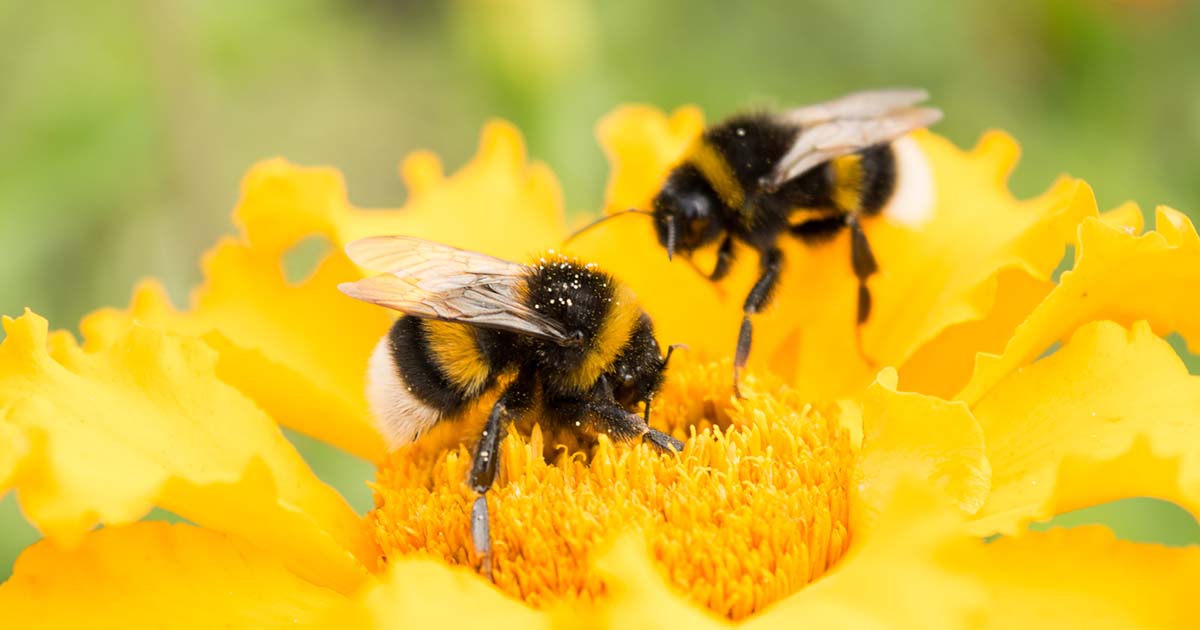Making a Bee-Friendly Yard

You can help the bees and other pollinators with a bee-friendly yard, which can be easier to maintain than a traditional lawn.
You can create a lawn using native wildflowers “that attract and sustain bees that requires less work, if you rethink the definition of what makes a beautiful lawn,” says plant ecologist Al Fedkenheuer. He explains that what looks good is a matter of opinion. "We've been trained that the only lawn that looks good is manicured, mowed, lush with no dandelions.
A bee lawn, or pollinator lawn, will look different because you let the grass grow longer. It will look different, but it will be more lovely because it has flowers in it and you won't have to mow it so much," Fedkenheuer says.
Make your lawn bee-friendly
For your lawn, choose low, flowering plants like white Dutch clover and wildflowers that are native to your area. Plant taller flowers like blue flax around the borders of your lawn. Most native wildflowers are perennials so you will only have to plant them once. Do not rake your lawn because that is where the bees live and do not use wood chips because they like dirt.
Plant lots of flowers
Give your bees lots of options and add visual appeal to your yard. “Bees have good colour vision and especially like blue, purple, violet, white and yellow. Create floral bull’s eyes — plant a single species in clumps about four feet in diameter instead of in scatterings. Many bees feed on one or a small number of plants. Include plants with a variety of flower shapes and sizes to attract a greater diversity,” says The David Suzuki Foundation.
Cultivate plants that will have a succession of blooms, so pollen (which provides fats and proteins) and nectar (which provides sugar) are available from the spring to the fall.
Plants that humans like are sometimes sterile and not much use to pollinators. “Straight (unaltered) native plants or heirloom varieties of non-native plants are best. Pussy willow is an excellent early-blooming plant that grows throughout much of Canada,” says David Suzuki Foundation.
Plant trees and shrubs
Trees and shrubs provide pollen early in the season and provide shelter. “Grass lawns offer no shelter and no food to pollinators. In contrast, trees and shrubs offer both food and shelter, creating a microclimate and safe haven of relatively undisturbed habitat,” says Common Sense Home.
Have water for the bees
Bees need water to survive but will drown if it is too deep. You can put floating wood pieces in your bird bath or add some stones for the bees to rest on. You can create moving water, which wildlife (except for mosquitos) love, by putting a solar fountain in your birdbath.
Do not use pesticides
Common Sense Home explains that “even ‘organic’ pesticides can be toxic to bees, so please be very, very careful about what you spray in your garden.”
Provide nesting sites
Bumble bees and native bees do not live-in beehives and are ground or box nesters. Leave some garden debris around the edges of your yard for bee nesting sites. Some bees nest in the ground and need a sunny location with little vegetation and some use mouse tunnels, plant stems, and beetle tunnels for their homes. Leave bare areas in sunny locations and keep perennials up over winter.
Watch the bees!
David Misfeldt of Bee City Canada designed the bee boulevard in Calgary and says that "if you plant native seeds for native bees, you can be a bee scientist in your own yard." You can upload photos of bees in your yard to Bumble Bee Watch, identify your species, and have your sighting verified by an expert here: https://www.bumblebeewatch.org/



